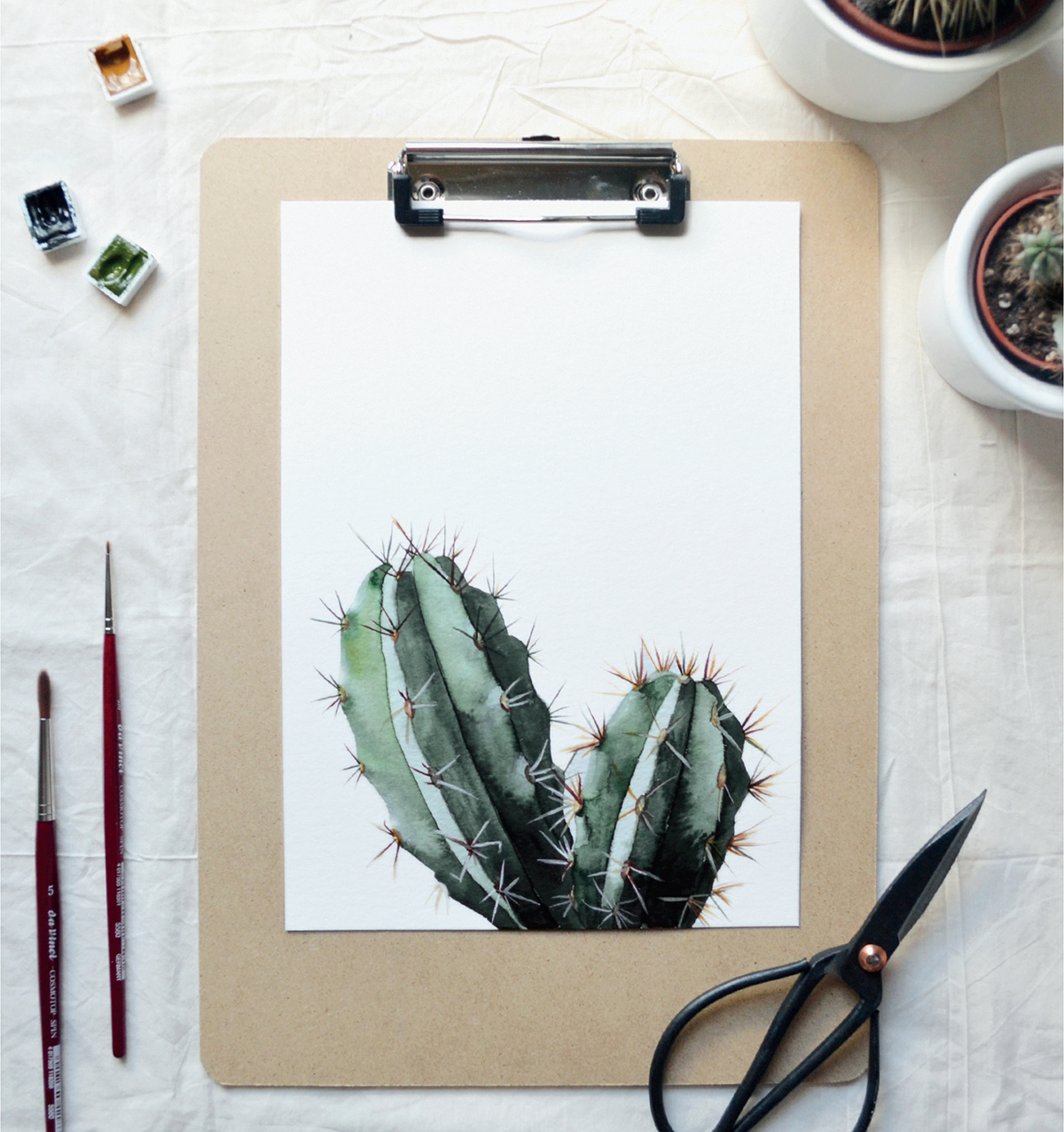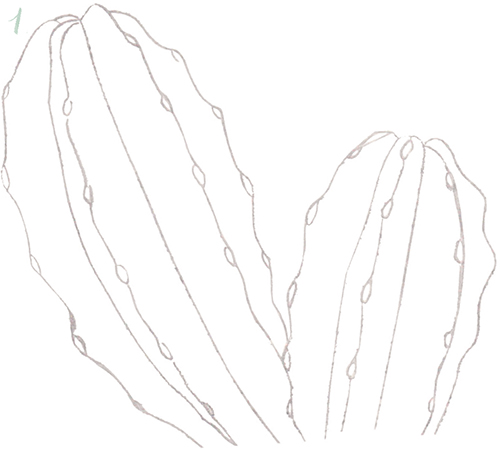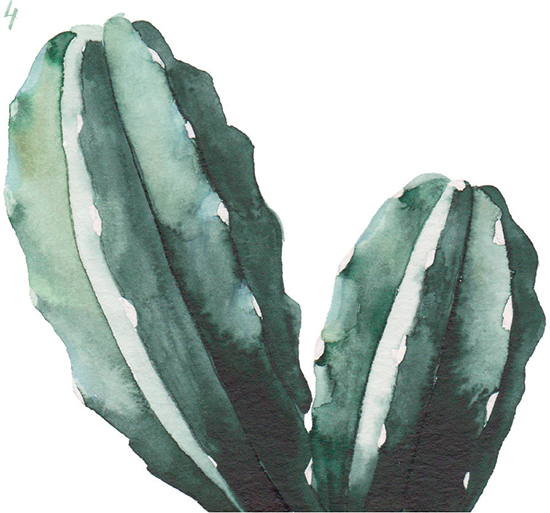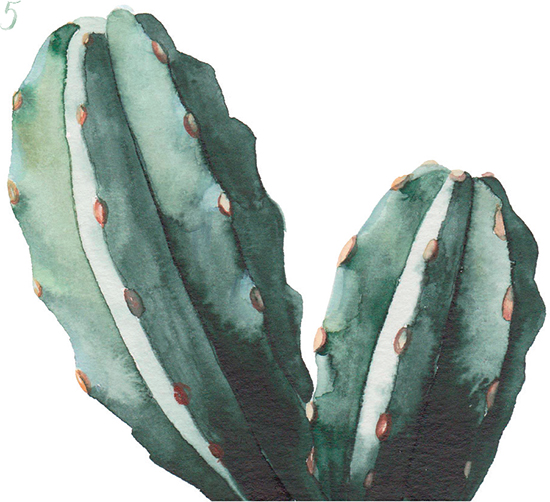
Cacti are popular houseplants — not just because they have an extremely strong urge for survival and grow well even for the less green-fingered among us. They also remind us of sunny days and the exotic locations where they grow freely in the wild. Anyone can have some of these prickly friends on their own windowsill. Or, even simpler still, hang one on your wall with this green project.


My color palette for this project. See My Materials
1Start by drawing two elongated, cucumber-shaped cacti, pointing up towards the top of the picture. Try to avoid details, drawing the outer lines and then the individual sections of each cactus.

2You will be coloring in alternate sections of the cacti so that you are not working on parts directly next to each another. This will stop the colors running together, and you will get clearly defined grooves. Mix up an appropriate shade of green for this, diluting it with varying quantities of water as required in the next step.
You can leave out the cactus spines from the sketch. This will enable you to focus on the sections that are going to have flat color.
3Start with a base layer of light green on the left-hand outer section of the first cactus. Then, while the color on the paper is still wet, dab a darker green onto the places that are in shadow on the cactus. Repeat this process from left to right with all the other sections of the cacti that are not adjacent to one another.

4When the paint on these sections of the cactus is completely dry, repeat the process described in step 4 for the remaining white sections.

The interplay of light and shadow in the form of pale and dark sections creates a sense of three-dimension form and makes the cactus appear more natural and lifelike.
5Once these green sections have dried, paint the areoles — the elongated, oval bumps from which the spines grow — in yellow and brown tones. Leave everything to dry fully.

The spines on the dark sections of the cactus should have an intense yellow or white tone, mixed with only a little water, so that they stand out from the dark background. The opposite applies to the spines that are visible on the light-colored sections. It’s best to use dark colors for these.
6Finally, paint the spines protruding from the areoles in white, brown, yellow, and dark green. A fine brush is best for this.

When painting the spines, make sure that the paint is not too watery. Otherwise, it may run unexpectedly on the paper or drip from the brush.